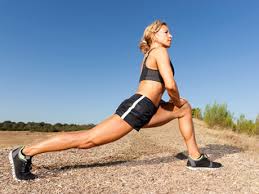 Re-defining the Warm-up
Re-defining the Warm-up
Warming up prior to exercising or playing sport is commonly performed yet often poorly executed.
Why do we warm up before physical activity? Without needing to delve into the specific physical changes that take place during a warm up, simply we perform a warm up for 2 reasons.
- To reduce the risk of injury
- To increase physical performance
Let’s talk about the ‘Traditional’ approach. If you visit your local sporting field on a Saturday you will no doubt witness a warm up session before the game. This often involves a light jog, passing a ball around, and then kicking a leg up onto the fence and holding a few stretches.
The problem with this is that while you are beginning to increase blood flow to the muscles with your run, getting them nice and ready, a light jog will not likely be adequately preparing you for the physical activity that you are going to endure on the sporting field. And then you stop and perform static stretches. These sustained stretches are very useful when it comes to relaxing muscle tissue, and improving mobility when performed over a long enough time frame. However prior to exercise and sport, isn’t reducing nerve input to your muscle the exact opposite of what you what to achieve??
The issue is that the traditional approach is not preparing you for the specific physical requirements that the sport demands. An optimal warm up that prepares your body for the physical demands of your sport involves the following key components:
Gluteal and core activation
Performing specific exercises to switch on your gluteal and core muscles helps to stabilize your body throughout movements as well as improve your ability to transfer force from one body part to another.
Dynamic stretches
Dynamic stretches involves taking muscles and joints through their range of motion without sustaining a long hold at the end of the movement. This improves your mobility without reducing nerve input to your muscles, keeping them active, warm and ready for physical activity.
Neural activation / Rapid response
Neural activation refers to your brain efficiently sending an electrical current to your muscles to perform a specific movement. By performing small amplitude yet rapid movements, you can improving the efficiency of your neuromuscular system. A functional example of Neural activation / Rapid response is agility ladder runs.
Sport specific drills
Finish your warm up with skills based drills or modified sports drills to get your brain and body ready for the specific activity or sport that you are about to participate in. This not only helps get the right muscles ready, but helps to get you in the right frame of mind for performing at your best.
Make the change from your traditional warm up to the ‘New’ approach and watch your performance improve and your injury risk decrease. Talk to your physiotherapist at MGS about how you can get the most out of your warm up.
